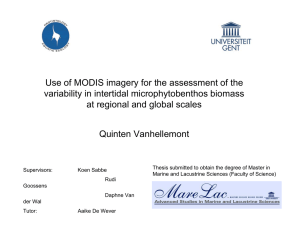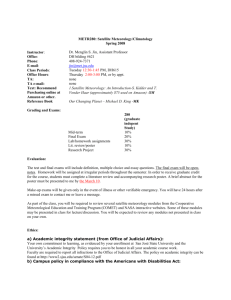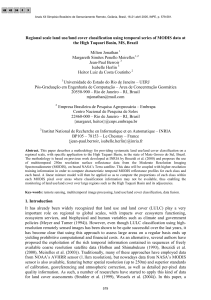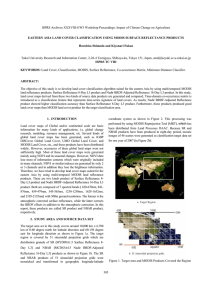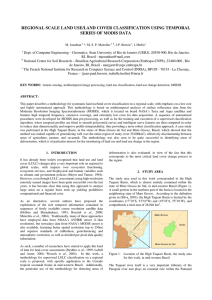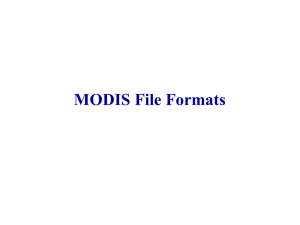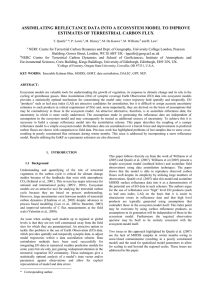DERIVING WATER FRACTION AND FLOOD MAP WITH THE
advertisement
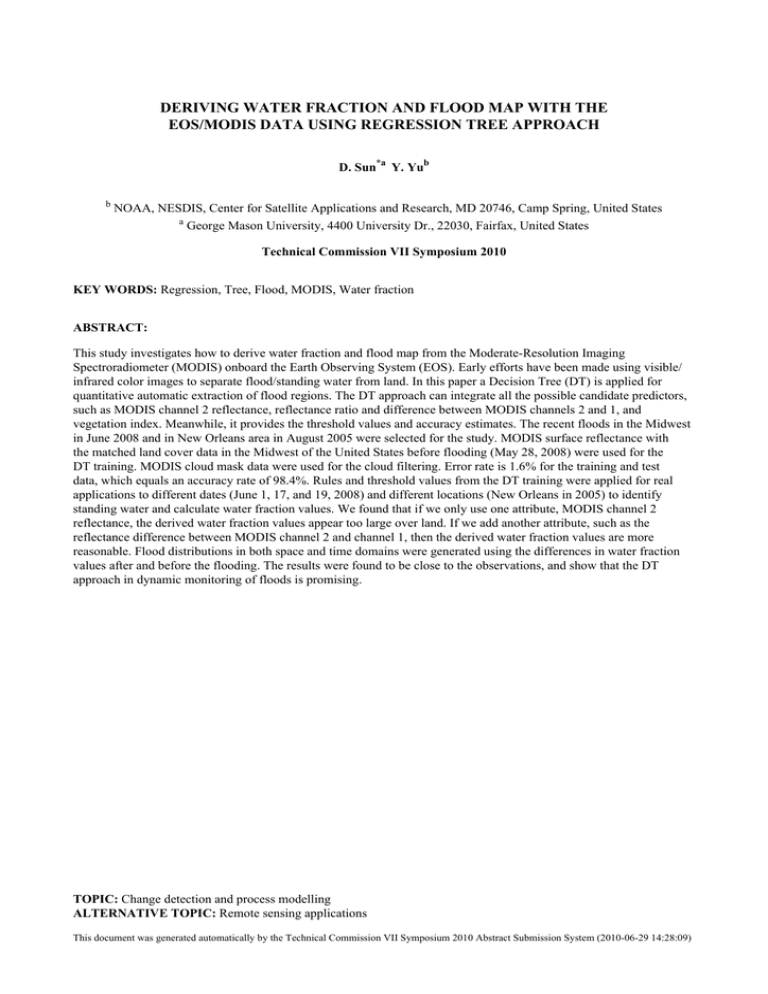
DERIVING WATER FRACTION AND FLOOD MAP WITH THE EOS/MODIS DATA USING REGRESSION TREE APPROACH D. Sun*a Y. Yub b NOAA, NESDIS, Center for Satellite Applications and Research, MD 20746, Camp Spring, United States a George Mason University, 4400 University Dr., 22030, Fairfax, United States Technical Commission VII Symposium 2010 KEY WORDS: Regression, Tree, Flood, MODIS, Water fraction ABSTRACT: This study investigates how to derive water fraction and flood map from the Moderate-Resolution Imaging Spectroradiometer (MODIS) onboard the Earth Observing System (EOS). Early efforts have been made using visible/ infrared color images to separate flood/standing water from land. In this paper a Decision Tree (DT) is applied for quantitative automatic extraction of flood regions. The DT approach can integrate all the possible candidate predictors, such as MODIS channel 2 reflectance, reflectance ratio and difference between MODIS channels 2 and 1, and vegetation index. Meanwhile, it provides the threshold values and accuracy estimates. The recent floods in the Midwest in June 2008 and in New Orleans area in August 2005 were selected for the study. MODIS surface reflectance with the matched land cover data in the Midwest of the United States before flooding (May 28, 2008) were used for the DT training. MODIS cloud mask data were used for the cloud filtering. Error rate is 1.6% for the training and test data, which equals an accuracy rate of 98.4%. Rules and threshold values from the DT training were applied for real applications to different dates (June 1, 17, and 19, 2008) and different locations (New Orleans in 2005) to identify standing water and calculate water fraction values. We found that if we only use one attribute, MODIS channel 2 reflectance, the derived water fraction values appear too large over land. If we add another attribute, such as the reflectance difference between MODIS channel 2 and channel 1, then the derived water fraction values are more reasonable. Flood distributions in both space and time domains were generated using the differences in water fraction values after and before the flooding. The results were found to be close to the observations, and show that the DT approach in dynamic monitoring of floods is promising. TOPIC: Change detection and process modelling ALTERNATIVE TOPIC: Remote sensing applications This document was generated automatically by the Technical Commission VII Symposium 2010 Abstract Submission System (2010-06-29 14:28:09)


